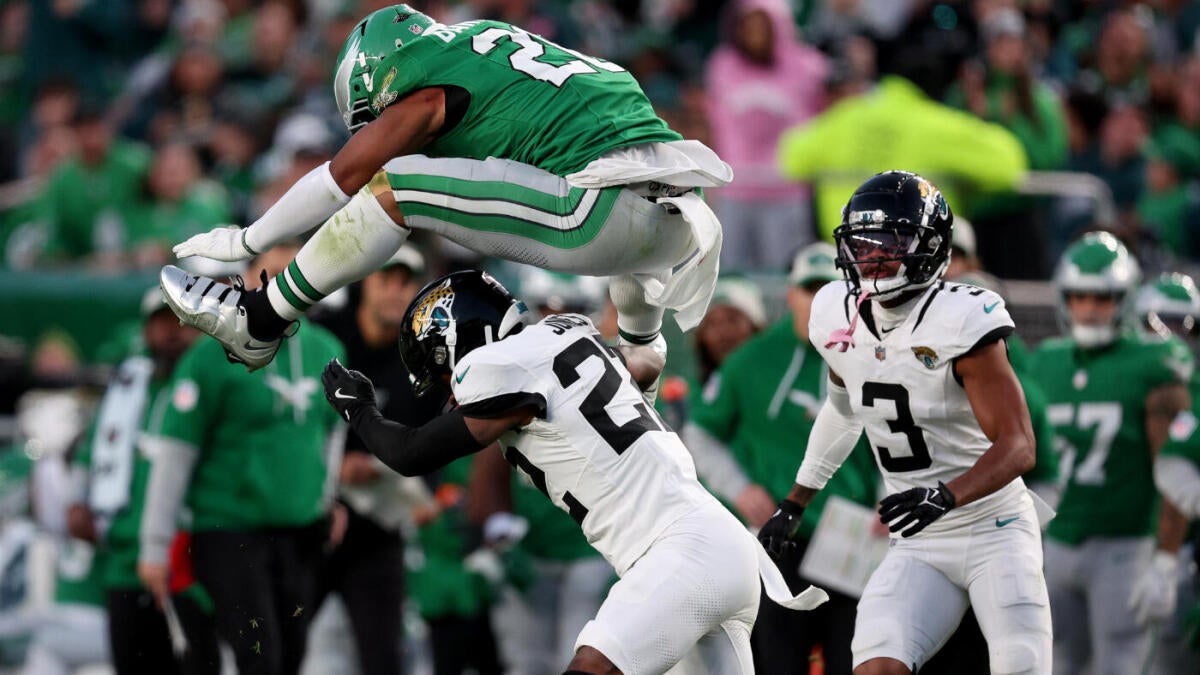The Intersection of Athleticism and Digital Artistry: Saquon Barkley on Madden NFL 26 Cover
The Madden NFL series has long been a cultural touchstone for football fans, balancing the celebration of iconic players with the allure of cutting-edge visual storytelling. The selection of Philadelphia Eagles running back Saquon Barkley for the Madden NFL 26 cover represents not just an individual accolade but a significant evolution in how sports moments are captured and immortalized within the gaming world.
A Leap Beyond the Ordinary: The Backwards Hurdle Moment
The Madden NFL 26 cover art centers around Barkley’s striking backwards hurdle—a move that defies conventional football imagery. Unlike typical portrayals focused on forward momentum or triumphant poses, this maneuver displays a fusion of agility, strength, and timing, making it one of the most visually compelling feats in recent NFL history. Barkley vaulting backward over a defender encapsulates the unpredictable dynamism that modern football brings to the field, breaking away from the “power only” narrative to highlight artistry within athleticism.
This choice by EA Sports illustrates a creative boldness rarely seen in sports game covers. It invites the audience to appreciate a moment layered in complexity—not only a physical act but a story of evasion, resilience, and the unexpected. The cover thereby engages fans by offering a fresh lens on football’s drama, emphasizing skill and innovation rather than traditional celebration or dominance.
Fan Dynamics: Echoes of Triumph and Trepidation
The announcement sparked a wide range of emotional responses from the fan community. Devotees of the Philadelphia Eagles herald this as a rightful honor, celebrating Barkley’s stature as a key figure in the franchise and the league. Such recognition boosts his profile, inspiring younger athletes who see in him both excellence and exceptionalism.
Simultaneously, the infamous “Madden Curse” myth reverberates through fan discussions, injecting a layer of superstition and caution. This phenomenon—where many cover athletes reportedly suffer setbacks—adds a narrative complexity that intertwines folklore with real-world career trajectories. While some fans remain hopeful, others watch with guarded optimism, keenly aware of the stakes involved in such visibility.
Visual Storytelling: Redefining Sports Game Aesthetics
The Madden cover’s portrayal of Barkley’s backwards hurdle signals a potential shift in visual storytelling within sports video games. Moving beyond static or predictable athlete poses, this image harnesses kinetic energy and narrative depth. It introduces a cinematic quality more commonly seen in film or fine art, using a single frame to evoke movement, tension, and the triumph of overcoming adversity.
This artistic direction aligns well with contemporary branding strategies in sports. Fans crave authenticity and meaningful moments, not just glossy presentations. By privileging action and originality, Madden NFL 26 may set a precedent for future covers that emphasize moments which resonate emotionally and creatively—capturing the sport’s evolving cultural significance.
Barkley’s Impact: Elevating the Role of the Running Back
Saquon Barkley’s prominent feature on the cover also speaks volumes about his role in reshaping NFL narratives. As a running back highlighted over more traditionally celebrated quarterback positions, Barkley’s image reflects a shift in appreciation for versatile, multi-dimensional athletes. His style blends raw power, tactical intelligence, and improvisational grace, traits that challenge and enrich the game’s conventional dynamics.
Positioning Barkley at the forefront underscores a broader league-wide trend: valuing diversity in playstyles and the artistry behind athletic decisions. It encourages fans and players alike to recognize the depth and complexity within the sport, expanding the lens through which football excellence is viewed.
A Pivotal Moment Etched in Digital History
Saquon Barkley’s Madden NFL 26 cover is more than a celebration of an individual athletic feat; it acts as a cultural marker that bridges traditional sports admiration with innovative digital expression. This bold visual choice elevates the artistry inherent in football, celebrating moments of spontaneity and grace alongside power.
Whether interpreted as a moment of glory or approached with caution due to the Madden Curse, the cover’s impact is undeniable. It lays the foundation for future explorations into how sports culture can be represented within gaming, emphasizing creativity and storytelling as much as raw athleticism. Ultimately, Barkley’s backward leap immortalized on Madden 26 encapsulates the spirit of a game—and a player—that continuously evolve, inspire, and captivate.

